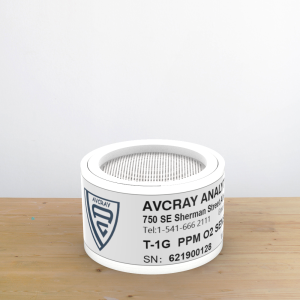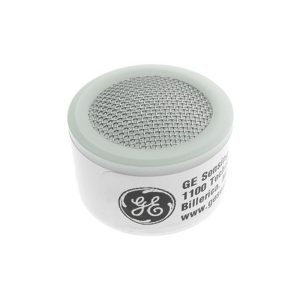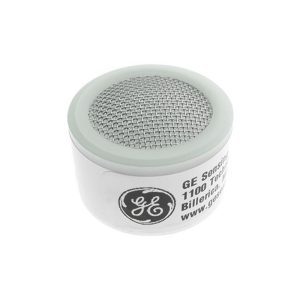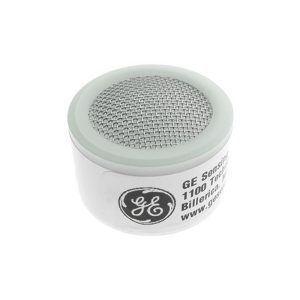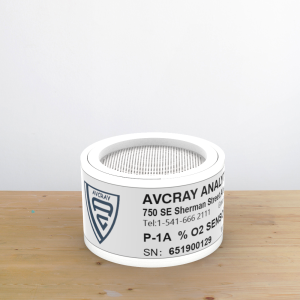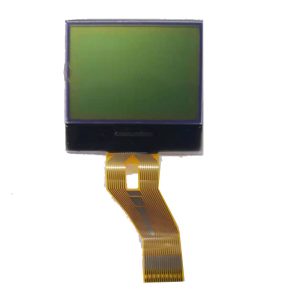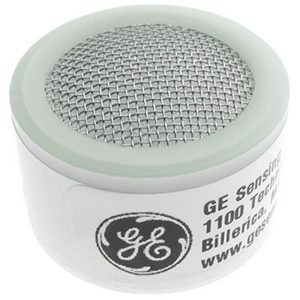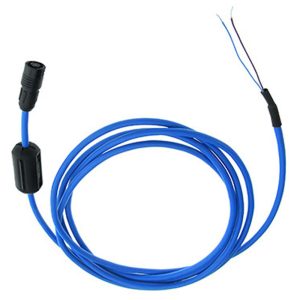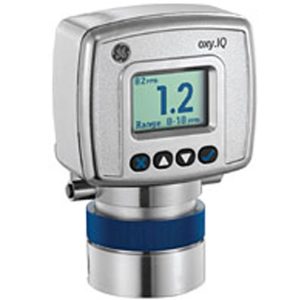Oxygen Sensor
The oxygen sensor is simply a sealed container (metal or plastic container), which contains two electrodes: the cathode is a piece of PTFE (polytetrafluoroethylene) coated with an active catalyst, and the anode is a lead block. This sealed container, there is only a capillary pore on the top, allowing oxygen to pass through the working electrode. The two electrodes are connected to the two protruding pins on the sensor surface through the current collector, and the sensor is connected to the sensor on the applied device through these two antennae. The electrolyte solution is filled so that different ions can be exchanged between the electrodes.
The flow rate of oxygen entering the sensor depends on the size of the capillary pores on the top of the sensor. When oxygen reaches the working electrode, it is immediately reduced to release hydroxide ions:
O2 + 2H2O + 4e- “type =” #_ x0000_t75 “> 4OH-
These hydroxide ions reach the anode (lead) through the electrolyte and undergo an oxidation reaction with lead to form the corresponding metal oxide.
2Pb + 4OH- “type =” #_ x0000_t75 “> 2PbO + 2H2O + 4e-
The above two reactions generate a current, and the magnitude of the current depends on the oxygen reaction speed (Faraday’s law). A known resistance can be connected to measure the generated potential difference, so that the concentration of oxygen can be accurately measured in the electrochemical reaction. The electrode participates in the oxidation reaction, so that these sensors have a certain life span. Once all available lead is completely oxidized, the sensor will stop functioning. Generally the service life of the oxygen sensor is 1-2 years, but it can also be increased by increasing the anode lead. Content or limit the amount of oxygen in contact with the anode to extend the life of the sensor
Capillary oxygen sensor and partial pressure oxygen sensor
The oxygen sensor produced by City Technology is divided into two types according to the diffusion of the oxygen entering the sensor. One is a capillary hole on the top of the sensor, and the other is a solid film that allows the gas to measure through the hole sensor. Is the oxygen concentration, and the solid film sensor measures the partial pressure of oxygen
The current produced by the pore sensor reflects the volume percentage concentration of the measured oxygen, which has nothing to do with the total pressure of the gas. However, when the oxygen pressure changes momentarily, the sensor will generate an instantaneous current. If it is not controlled, a problem will occur. The sensor also appears when it is subjected to repeated pressure pulses. For example, the gas entering the sensor is pumped. The explanation of this phenomenon is as follows:
Pressure transient
When the fine-hole oxygen sensor encounters a sudden pressure increase or decompression, the gas will be forced to pass through the fine-hole grid (large flow). The increase (or decrease) of the gas generates a transient current signal. Once the situation is stable again, there is no pressure pulse. , The transient is over. Such transients can be alarmed by the instrument, so CityTech can work hard to find solutions to reduce the impact of stress
All urban technology’s fine-pore oxygen sensors use a high-flow resistance mechanism. See Figure 2. Basically, a PTFE anti-high-flow film can be added to reduce the transient effects of pressure changes. This film is covered with a metal cap or plastic. The cap is tightly fixed on the fine hole. This design can greatly reduce the effect of transient changes in the signal.
However, the transient force generated by some pressure changes exceeds the allowable range of this design, especially the equipment that uses the pumping instrument to send gas to the sensor. The gas generated by some pumps causes continuous pressure pulses to the CiTiceL oxygen sensor, which is artificially enhanced. In this case, it is necessary to design a gas expansion chamber outside the sensor to reduce the pressure pulse on the sensor.
Partial pressure type oxygen sensor
Capillary pores controlling gas diffusion is not the only way to control oxygen entering the sensor. We can also use a very thin plastic film to cover the top of the sensor to disperse oxygen molecules before entering the sensor. Gas sensor German rbr EN2 integrated flue gas analyzer German rbr CN handheld flue gas analyzer
Showing 1–12 of 16 results

